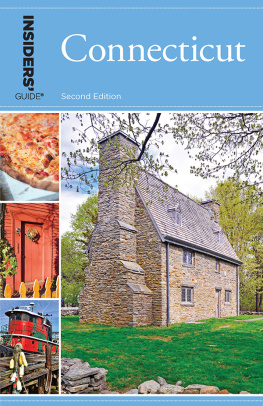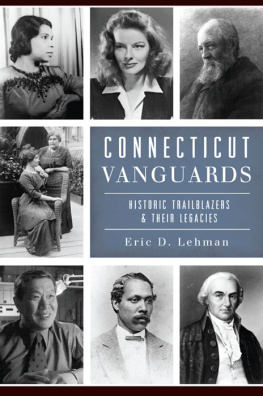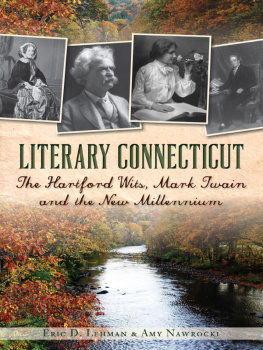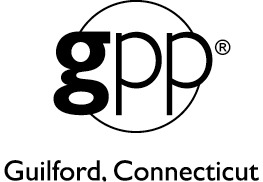SECOND EDITION
ERIC D. LEHMAN
An imprint of Rowman & Littlefield
Distributed by NATIONAL BOOK NETWORK
Copyright 2015 by Rowman & Littlefield
Maps: Design Maps Inc. Rowman & Littlefield
All rights reserved. No part of this book may be reproduced in any form or by any electronic or mechanical means, including information storage and retrieval systems, without written permission from the publisher, except by a reviewer who may quote passages in a review.
British Library Cataloguing in Publication Information available
Library of Congress Cataloging-in-Publication Data available
ISBN 978-1-4930-1284-8 (paperback)
ISBN 978-1-4930-1618-1 (e-book)
 The paper used in this publication meets the minimum requirements of American National Standard for Information SciencesPermanence of Paper for Printed Library Materials, ANSI/NISO Z39.48-1992.
The paper used in this publication meets the minimum requirements of American National Standard for Information SciencesPermanence of Paper for Printed Library Materials, ANSI/NISO Z39.48-1992.
All the information in this guidebook is subject to change. We recommend that you call ahead to obtain current information before traveling.
Contents
Directory of Maps
About the Author
Eric D. Lehman teaches literature and creative writing at the University of Bridgeport, and his essays, articles, and stories have appeared in dozens of journals, newspapers, and magazines. He is the author of nine other books about Connecticut, including Becoming Tom Thumb: Charles Stratton, P. T. Barnum, and the Dawn of American Celebrity; Homegrown Terror: Benedict Arnold and the Burning of New London; Literary Connecticut, A History of Connecticut Wine; and A History of Connecticut Food. He lives in Hamden with his wife, poet and author Amy Nawrocki, and their two cats.
Acknowledgments
I would like to thank my editor, Amy Lyons, and my mother, Trena Lehman, for all their help assembling this project. I am also grateful to David Lehman, Michael and Elizabeth Nawrocki, Kris Nawrocki, J. Timothy Quirk, Eddie Podbielski, Hans van der Geissen, Ann Nyberg, Francois Steichen, David Leff, Winter Caplanson, and all the other friends and family who made sure I didnt forget their favorite places to eat, play, and stay.
Most of all, I would like to thank my wife, poet Amy Nawrocki. Her compassion and courage are beacons of hope in a world too often dark, and she continues to light the way as we explore Connecticut together. I could not ask for a better traveling companion.
Introduction
What is home? This is a question that often troubles our nomadic society. Home is certainly more than the place we lay our head to sleep each night, or labor at in the day. Maybe it is a feeling, a spirit, a state of being. We might even think it is just an illusion. Whatever it is, we search for it, traveling the gray back roads of the world, wondering what we are missing. In the words of native son and playwright Eugene ONeill: Obsessed by a fairy tale, we spend our lives searching for a magic door and a lost kingdom of peace.
There are many places in this world that promise you that fairy tale, easy to imagine and in reality hard to live with. Connecticut is a doorway to the truth.
Here you can walk through some of the oldest buildings in America and feel moss on the stone walls of colonial farmers. You can taste a fried oyster in a seaside restaurant or the first sip of this years Chardonnay in a local vineyard. You can fish the small, stony rivers or hike the edge of traprock ridges. The loamy smell of deep forests might call, or the salty tang of long golden beaches.
One thing becomes abundantly clear: There is no one path to knowing the truth Connecticut offers. You may find it on the green grass of a hill, on the porch of a clapboard inn, or at the top of a roller coaster. It is waiting for you at a farm stand, at an antiques store, and at the curve of the next country road. You can find truth through our paintings, our architecture, and our music. And hopefully you will find it in the people you meet, in their sparkling eyes and firm handshakes.
Literary giant Wallace Stevens once said, There is nothing that gives the feel of Connecticut like coming home to it. He found that feeling in the ground beneath his feet each day on the way to work. Going back to Connecticut is a return to an origin... an origin of hardihood, good faith and good will. Long before Stevens composed poems on the streets of the state capital, ardent patriot of the American Revolution Nathan Hale found his own truth here before the United States of America officially existed. He loved Connecticut so much that he died for it, sneaking into British-controlled New York City, not in the pursuit of some abstract freedom but to save the home he loved. HomeHale understood what that word meant, and though he died before he could tell us more in words, his actions speak to us over two centuries later.
Connecticut offers visitors and residents alike glimpses of that unspoken truth. What is it, you ask? I can only tell you what I found in the years since I made my home here, something that Nathan Hale might have echoed had he lived. We must first become patriots of a small plot of earth, then a watershed, then a township, a county, a state. We must love, and love deeply, the people around us and the earth we stand on. Only then can we be in the real and truest sense patriots of a nation, and hopefully of the human race.
Is that what you will learn here in Connecticut? Its time to find out.
How to Use This Book
Whether you are just visiting the varied landscapes of Connecticut or are here to stay, this book will guide you well. Vital facts and insiders insights are organized in a way that minimizes your time spent searching the book, which does not require sequential reading. This guide is chock-full of special places that insiders know, and with it firmly in hand as you travel the state, you will soon be one of us.
The first few sections are designed to make you comfortable with both Connecticut and this book. Welcome to Connecticut lays out the structural and cultural map of the state, which can seem small at first glance but soon reveals layer after layer of possibilities. It also details the states transportation grid in a clear way. No doubt you will have an easier time than the early pioneers who hacked their own paths through dense forest and swamp. Still, it helps to get a feel for the options we have to move around freely in our densely woven state.
The History chapter cannot hope to contain the rich tapestry of times gone by, but I have highlighted some of the most exciting and relevant incidents. It will hopefully whet your appetite for the many historical attractions we have to offer.
Throughout the book you will find Insiders Tips ( ) that will guide you to an important resource, illuminate a special point, or reveal a local secret. These tips are also built into the listings themselves, and it is my hope that youll find your own special place as you use this book to explore. Larger Close-ups highlight a particularly rich subject for discovery. Be sure to use a pen and highlighter to annotate the listings as you experience them for yourself. Also be on the lookout for our Insiders Choice icons (), which highlight this insiders favorites and recommendations.
) that will guide you to an important resource, illuminate a special point, or reveal a local secret. These tips are also built into the listings themselves, and it is my hope that youll find your own special place as you use this book to explore. Larger Close-ups highlight a particularly rich subject for discovery. Be sure to use a pen and highlighter to annotate the listings as you experience them for yourself. Also be on the lookout for our Insiders Choice icons (), which highlight this insiders favorites and recommendations.









 The paper used in this publication meets the minimum requirements of American National Standard for Information SciencesPermanence of Paper for Printed Library Materials, ANSI/NISO Z39.48-1992.
The paper used in this publication meets the minimum requirements of American National Standard for Information SciencesPermanence of Paper for Printed Library Materials, ANSI/NISO Z39.48-1992. ) that will guide you to an important resource, illuminate a special point, or reveal a local secret. These tips are also built into the listings themselves, and it is my hope that youll find your own special place as you use this book to explore. Larger Close-ups highlight a particularly rich subject for discovery. Be sure to use a pen and highlighter to annotate the listings as you experience them for yourself. Also be on the lookout for our Insiders Choice icons (), which highlight this insiders favorites and recommendations.
) that will guide you to an important resource, illuminate a special point, or reveal a local secret. These tips are also built into the listings themselves, and it is my hope that youll find your own special place as you use this book to explore. Larger Close-ups highlight a particularly rich subject for discovery. Be sure to use a pen and highlighter to annotate the listings as you experience them for yourself. Also be on the lookout for our Insiders Choice icons (), which highlight this insiders favorites and recommendations.